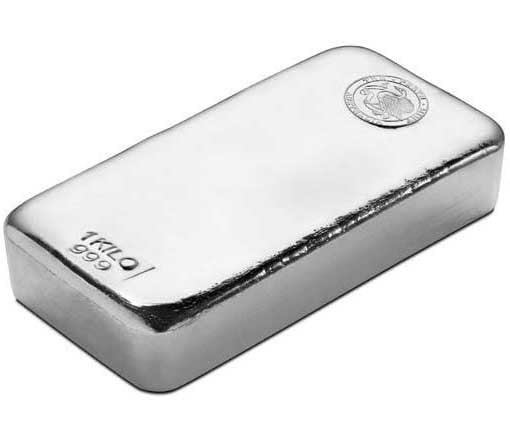Silver has been known for its antimicrobial properties for centuries. The ability of silver to kill bacteria is attributed to several factors:
-
Silver Ions: When silver comes into contact with moisture or an aqueous solution, it releases silver ions (Ag+). These ions are highly reactive and can bind to various components within bacterial cells.
-
Disruption of Cell Membrane: Silver ions have the ability to interact with the cell membranes of bacteria. They can disrupt the integrity and permeability of the bacterial cell membrane, leading to leakage of cellular contents and eventual cell death.
-
Inhibition of Enzymes and DNA Replication: Silver ions can interfere with enzymes and proteins essential for bacterial metabolism and DNA replication. This disruption hampers bacterial growth and replication, contributing to the bactericidal effect of silver.
-
Generation of Reactive Oxygen Species (ROS): Silver ions can induce the production of reactive oxygen species (ROS) within bacterial cells. ROS, such as hydrogen peroxide and superoxide radicals, cause oxidative damage to cellular components, including proteins, DNA, and cell membranes, leading to bacterial cell death.
-
Binding to DNA: Silver ions can also directly interact with bacterial DNA, inhibiting replication and disrupting essential cellular processes.
-
Broad-Spectrum Effect: Silver exhibits a broad-spectrum antimicrobial effect, meaning it can be effective against a wide range of bacteria, including both Gram-positive and Gram-negative bacteria. This property makes silver a valuable antimicrobial agent for various applications.
-
Reduced Resistance Development: Bacteria are less likely to develop resistance to silver compared to conventional antibiotics. While resistance can occur over time, it typically develops at a slower rate, making silver a potentially valuable option in combating antibiotic-resistant bacteria.
Due to its antimicrobial properties, silver has found applications in various fields, including medical devices, wound dressings, water purification systems, and coatings for surfaces prone to bacterial contamination. However, it's important to note that the specific mechanisms of silver's antibacterial action are still an area of ongoing research, and the full understanding of its effects on bacteria is not yet complete.
It's also worth mentioning that while silver can be effective against many types of bacteria, it may not be equally effective against other microorganisms, such as viruses or fungi. The antimicrobial efficacy of silver can vary depending on factors like concentration, exposure time, and the specific bacterial strain or species.
Here are more details and facts about why silver has antimicrobial properties and can effectively kill bacteria:
-
Oligodynamic Effect: The antimicrobial properties of silver are often attributed to the oligodynamic effect. In this phenomenon, even very low concentrations of certain metals, including silver, exhibit potent antimicrobial activity. The exact mechanisms behind the oligodynamic effect are not fully understood, but it is believed to involve the disruption of microbial cellular processes.
-
Broad-Spectrum Activity: Silver has a broad-spectrum antimicrobial activity, meaning it is effective against a wide range of bacteria, including both Gram-positive and Gram-negative bacteria. This broad activity makes silver a versatile antimicrobial agent.
-
Disruption of Bacterial Proteins: Silver ions can bind to bacterial proteins, disrupting their structure and function. This interference can affect crucial enzymes, transport proteins, and other essential proteins required for bacterial survival and replication.
-
DNA Binding and Inhibition: Silver ions can bind to bacterial DNA, interfering with DNA replication and transcription. This binding disrupts the normal functioning of bacterial genetic material and impairs bacterial growth and reproduction.
-
Inactivation of Respiratory Enzymes: Silver ions have been shown to inhibit bacterial respiratory enzymes, such as cytochrome c oxidase, which are essential for energy production in bacterial cells. Inhibition of these enzymes disrupts bacterial metabolism and can lead to bacterial death.
-
Reactive Oxygen Species (ROS) Generation: Silver ions can induce the production of reactive oxygen species (ROS) within bacterial cells. ROS, such as hydrogen peroxide and hydroxyl radicals, are highly reactive molecules that can cause oxidative damage to proteins, lipids, and DNA, ultimately leading to bacterial cell death.
-
Synergistic Effects: Silver can exhibit synergistic effects when combined with other antimicrobial agents. Studies have shown that combining silver with antibiotics or other antimicrobials can enhance their effectiveness and help overcome bacterial resistance.
-
Reduced Bacterial Resistance: Compared to traditional antibiotics, bacteria are less likely to develop resistance against silver. The exact reasons for this reduced resistance development are not fully understood but may be attributed to the multiple mechanisms of silver's antimicrobial action and its broad-spectrum activity.
-
Long-Lasting Effect: The antimicrobial properties of silver can persist even after the initial exposure. This long-lasting effect can provide continuous protection against bacterial colonization and growth on surfaces or within medical devices.
It's important to note that while silver has antimicrobial properties, its use should be appropriately regulated and targeted. Silver should be used judiciously to minimize the potential for adverse effects and the development of bacterial resistance. Research in the field of silver's antimicrobial mechanisms is ongoing, further expanding our understanding of its efficacy and potential applications.

